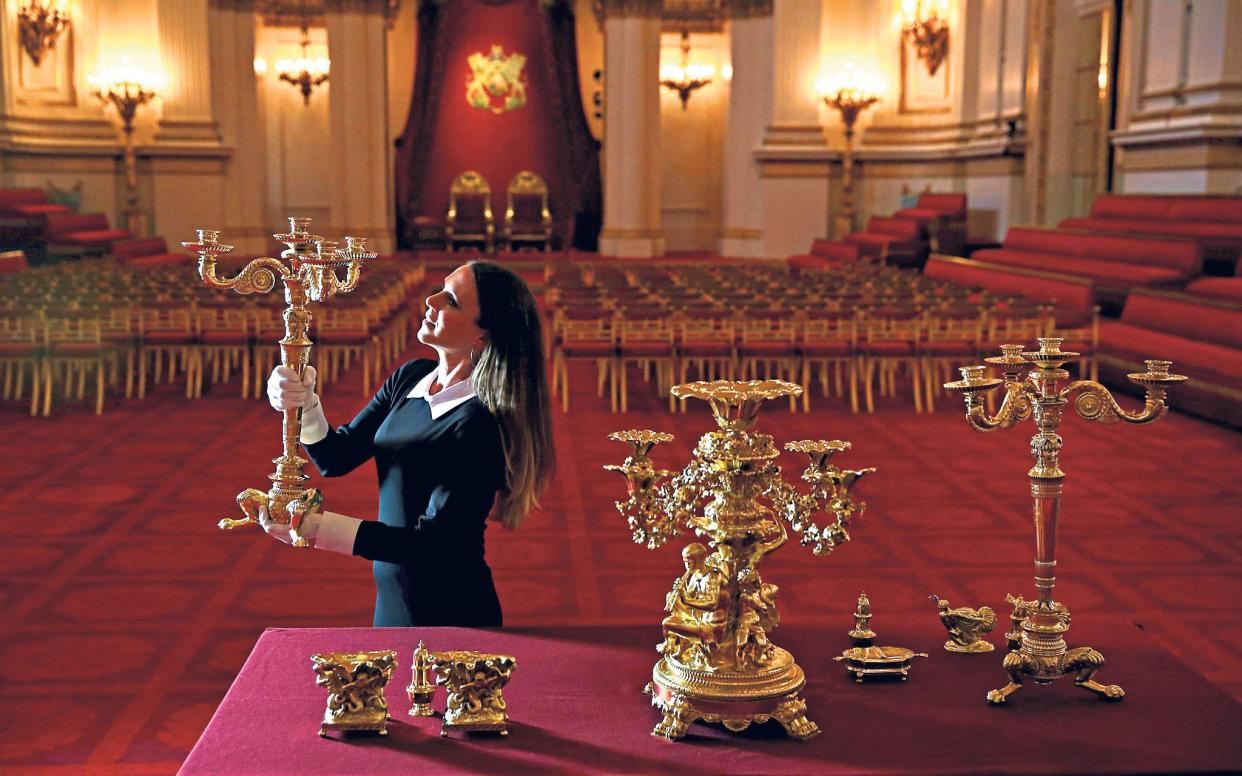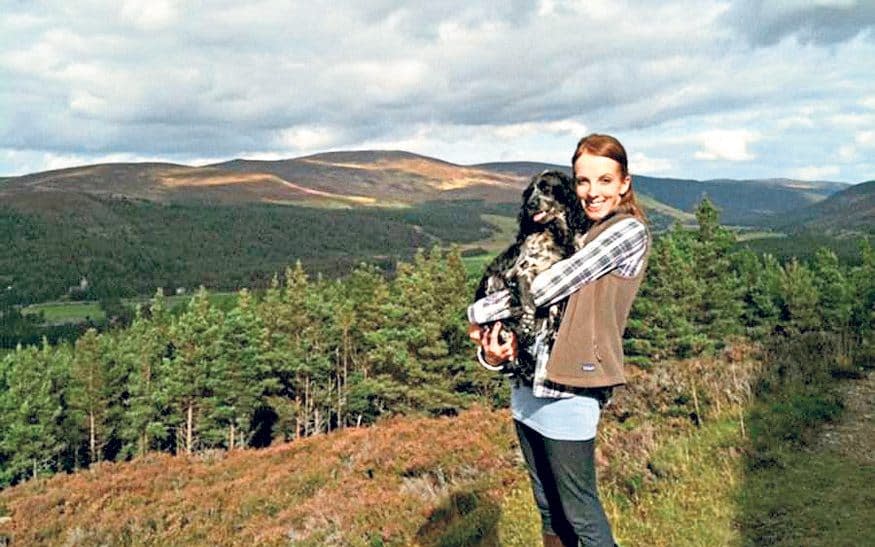What it's really like to be a housemaid at Buckingham Palace

Once the bubble of university study bursts and you’re let out into the harsh reality of the job market, it can be hard to find even the end of a career ladder, let alone climb one. In my experience, it seemed to be more about “who you know”, not what you know, especially in the arts world.
I remember going for an interview for a junior job at Sotheby’s on New Bond Street and the salary was around £16,000 – an option only open to those who have a family home in London or a trust fund.
After multiple interview excursions in and out of London, at my own expense, I began to feel quite jaded at how difficult it was to get a job – I’d worked hard throughout my education, was an A/B-grade student at GCSEs and A-level, with a 2.1 master’s degree in art history and yet seemingly unemployable.
I regularly scanned my university’s careers web page for jobs and chanced upon an advertisement for a summer job based at Balmoral Castle: a three-month position working as a “hospitality assistant”. My main interest and ambition at this time was to work within art/architectural conservation and I have always had an interest in historic buildings.
I had no experience in hospitality, but the thought of working within a historic royal castle definitely attracted and intrigued me. I sent off an application and thought no more about it.
A few weeks later, I was invited for an interview with the head housekeeper at Buckingham Palace. It was an informal interview and she was keen to tell me that it wouldn’t be all work and no play – there was a staff bar on the estate and Scottish dances to attend. She said it would be “like university but without the lectures”. This sounded pretty appealing to me.
I only intended to do the job for the summer, but when the head housekeeper asked if I would be interested in a permanent live-in housemaid job back at Buckingham Palace, I found myself accepting. I didn’t want to return to the fruitless search for a properly paid graduate job.
On my first day at the palace, I was shown around the State rooms. Walking down the picture gallery, I was amazed to see famous paintings by Van Dyck and Canaletto, a Constable here, a Reynolds there. I was excited that this was to be my “office”, and that I was allowed to wander down these gilded staircases each day surrounded by so many priceless artworks.
My wide-eyed wonder soon started to wane; with 6.30am starts, you were lucky if you could keep your eyes open long enough to focus on your duster, let alone the Van Dyck on the wall. It was nevertheless an element of the job that greatly compensated for the less glamorous aspects of my duties. To be able to dust an Antonio Canova sculpture one minute and clean a royal loo the next really is a tale of two jobs.

Although much of my job was essentially that of a domestic cleaner, I wasn’t the only overqualified “servant”. Many other housemaids were also graduates, often choosing to work there because of the prestige of working within this particular residence and for this particular employer.
At an investiture one morning, a friend and I were vacuuming the grand staircase when a cameraman said: “You can come and clean my place if you want,” to which my friend replied: “I only clean palaces.” I have always enjoyed practical duties and would far prefer to be dusting the Queen’s palace rather than stuck behind a computer in a desk-based, glass-office admin job.
Soon after I started working at Buckingham Palace, I was given the opportunity to work as a volunteer within the Royal Collection based at St James’s Palace in my afternoons off. I thought that, as an art history graduate, it could help me to find the arts job that I had hoped for after graduating.
I was interested in art conservation and restoration, so they gave me the task of cleaning a 17th-century manuscript. I was glad of the opportunity and to be responsible for handling this important work, but, as the hours ticked by, it dawned on me that, while I was classified as a lowly maid next door, and at the Royal Collection I was a grander “Art Conservation Intern”, at least in the palace I could dust contours: sculptures and antique furniture, gilded staircases and picture frames, which was somehow more pleasing and rewarding.
I had found my limit for painstaking and practical work – and dusting very old sheets of paper with cotton wool balls for free was it. So, after a few months, I relinquished my role as a voluntary historic paper cleaner at St James’s, strolled back across Green Park and walked through the side gate of the palace – it was time to embrace my role as a royal maid.

Buckingham Palace was seen by everyone as “The Office”. I found I welcomed the division of the royal calendar and the escape from the city that came when the Queen travelled to her other residences, where we would be busier, always with a guest to maid for and lots to do.
At Windsor, Sandringham and Balmoral, I was more of a traditional lady’s maid, carrying out duties that had changed little since Queen Victoria’s time. I felt a bit like a time traveller and relished the unique nature of the role. One off-duty highlight was dancing a waltz with the Duke of Edinburgh at the Ghillies Ball at Balmoral Castle, a memory with particular poignancy now.
I had embarked on a path that was very different to that of my university peers; early on I had felt slightly reticent about landing a job “in service” after a university education. I only intended to stay for a year but ended up staying for four, before leaving to work for other high-profile families as a travelling lady’s maid, PA and stylist.
I have also published a book on dress codes, wardrobe management and clothing care – Wardrobe Wisdom – and I run a popular style Instagram account, @theladysmaid, where I share my style ideas for different occasions.
I often wonder what I would be doing now if I hadn’t taken that temp job in the Highlands that led me down this very unique career path. Maybe I would be sitting behind a desk in a London office wondering what it would be like to work for HM the Queen.
The inner workings of the royal household
One might imagine that employees of the Royal family still occupy an archaic world of courtiers currying favour in castles.
But alongside the traditional roles you may expect, the Queen’s Royal Household today employs IT professionals and engineers – as well as helicopter pilots, royal protection officers, footmen, nannies, butlers, painting conservators, pastry chefs and grooms.
Other members of the Royal family who undertake public duties, such as the Duke and Duchess of Cambridge and the Princess Royal, have separate, smaller “households” to support them in their duties.
Before they stepped back from royal duties and closed their offices at Buckingham Palace, the Duke and Duchess of Sussex formed their own household of 15 staff, including private secretaries and personal assistants (who were subsequently let go).
“The Firm” now describes itself as “unexpectedly business-minded”, grand historic surroundings aside (the majority of employees are based at Buckingham Palace and St James’s Palace in London, Windsor Castle, and the Palace of Holyroodhouse in Edinburgh).
There are 188 staff bedrooms at Buckingham Palace for live-in staff, and roles such as that of personal assistant offer the opportunity to travel with members of the Royal family. While the exact number of people employed in the Royal household fluctuates, some 1,200 people are employed at Buckingham Palace alone.
A roll call of royal employees, past and present

Lady-in-waiting Susan Hussey
Senior lady-in-waiting Susan Hussey has been assisting the Queen since 1960, when she was appointed “Woman of the Bedchamber”. She was recently seen in the State Bentley with the Queen as she journeyed to St George’s Chapel at Windsor Castle for Prince Philip’s funeral.
The queen currently has four other ladies-in-waiting who personally attend to her: Ann Fortune FitzRoy, the Duchess of Grafton; Susan Rhodes; Lady Elizabeth Leeming; and The Hon Mary Morrison.
Major Tom White
In 2020, former Royal Marines officer Major White took over as Queen’s equerry. White was preceded by Lieutenant Colonel Nana Kofi Twumasi-Ankrah, the first black man to hold the prestigious public-facing position. The Queen’s equerry assists the Queen during public duties as her right-hand man, performing duties such as laying wreaths at ceremonies.
An equerry is a personal attendant role not to be confused with the Crown Equerry, who looks after the Royal Mews, providing road transport for the royals by horse-drawn carriage and motor car, and is part of the Lord Chamberlain’s office.
William Tallon
(Otherwise known as Backstairs Billy), Tallon was Page of the Backstairs to Queen Elizabeth the Queen Mother. He entered royal service during the time of King George VI as a lowly footman, and rose to prominence as a key palace insider.
Lady-in-waiting Anne Glenconner
Anne Glenconner, Princess Margaret’s lady-in-waiting, revealed what working for the Royal family was really like when the cameras stopped rolling in her memoir Lady in Waiting: My Extraordinary Life in the Shadow of the Crown.
Paul Burrell
A former footman to the Queen, Burrell became butler to Diana, Princess of Wales, before forging a career as a controversial royal commentator and tell-all memoir writer after the Princess’s death.
Angela Kelly
British fashion designer, dressmaker and milliner Mary Angela Kelly has served as the Queen’s senior dresser and wardrobe mistress since 2002, and in that time has penned the book The Other Side of the Coin: The Queen, the Dresser and the Wardrobe. Her official title is Personal Assistant, Adviser and Curator to Her Majesty The Queen.
Dickie Arbiter
Dickie Arbiter, a former press secretary to the Royal family, revealed the inner-workings of everyday life inside Buckingham Palace, and what life in service to the Crown was really like in his memoir, On Duty with the Queen: My Time as a Buckingham Palace Press Secretary.

 Yahoo News
Yahoo News 
